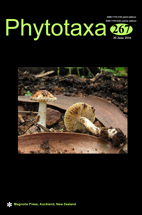Abstract
Two species of Ceramothyrium were found on dead leaves in northern Thailand. They have mycelial pellicles covered the ascomata, with a circumferential space filled with sparse mycelium. Based on their morphology and phylogenetic analyses of a combined LSU and ITS dataset, one taxon is introduced as a new species, Ceramothyrium longivolcaniforme sp. nov., and one is identified as C. thailandicum. This new species is characterized by an elongate, thick mycelial pellicle and muriform ascospores with a mucilaginous sheath, and is phylogenetically related to C. podocarpi.

